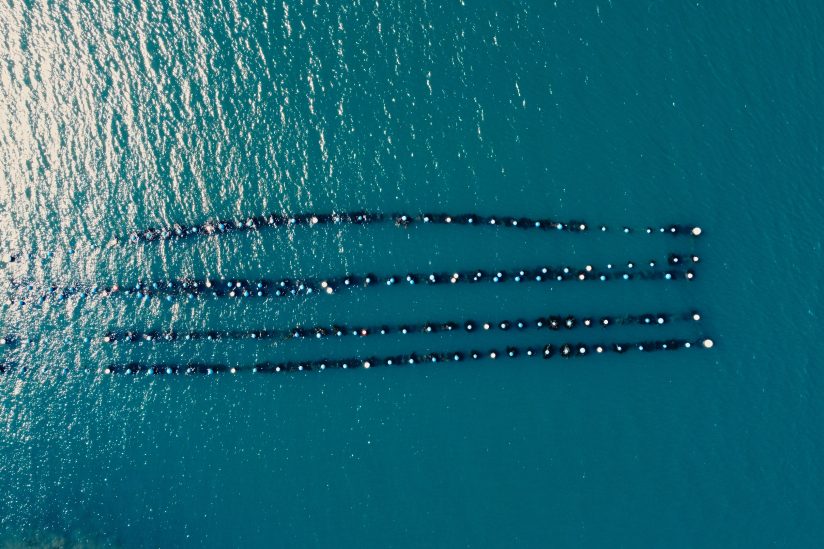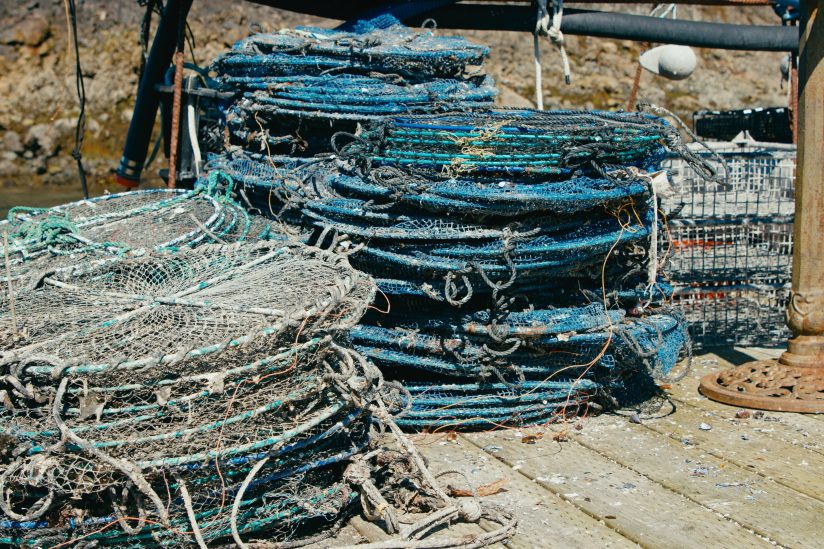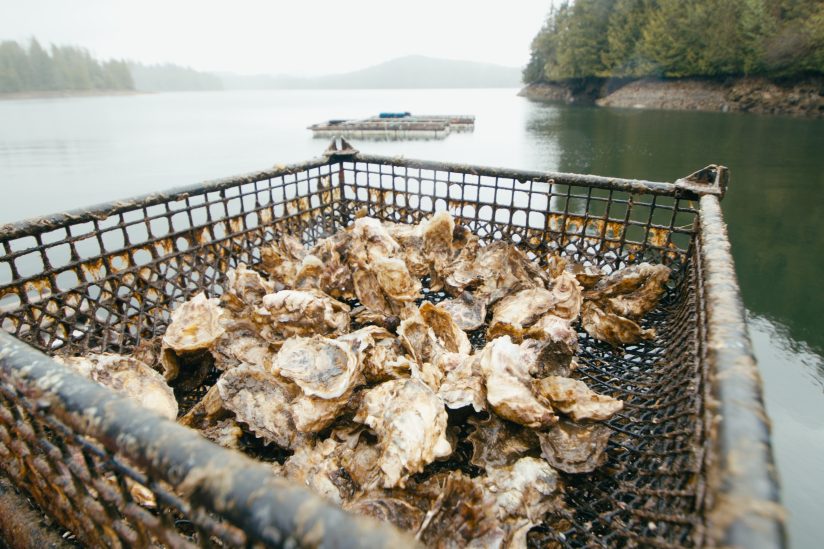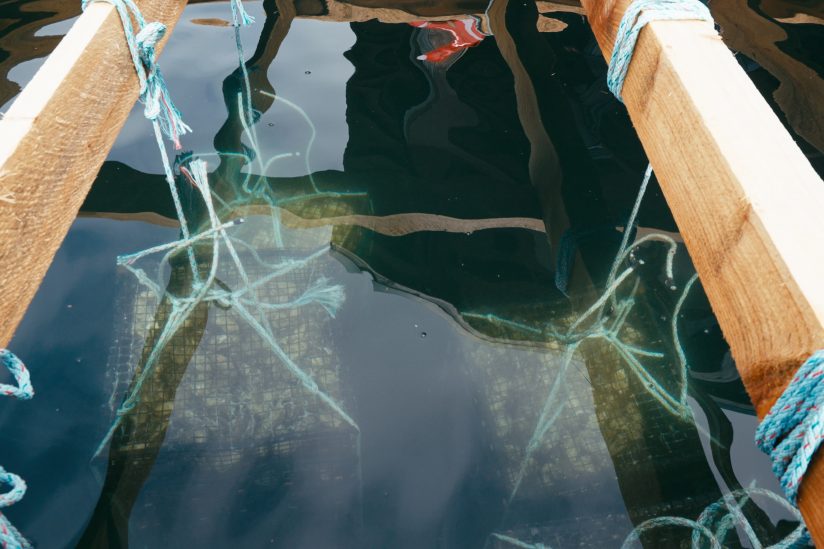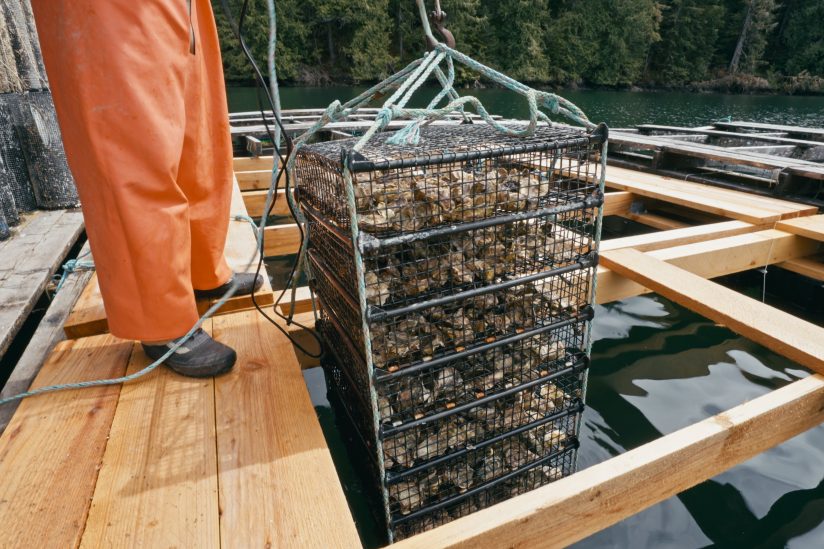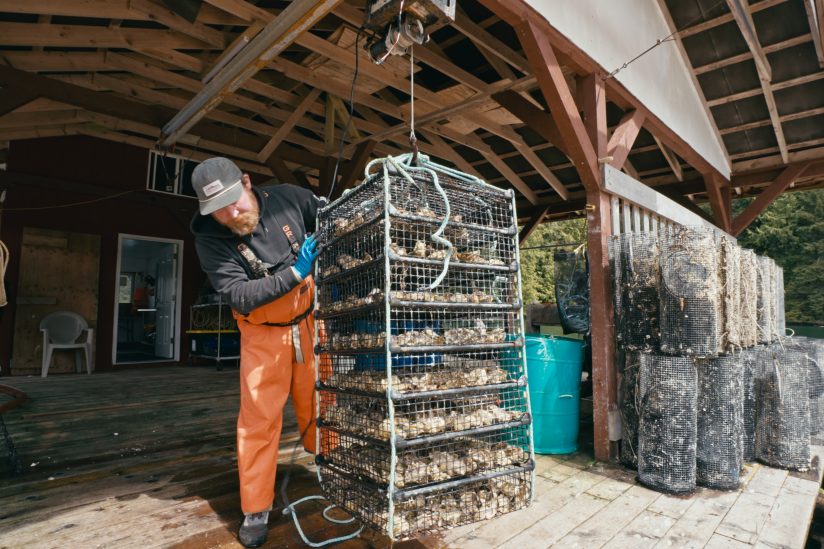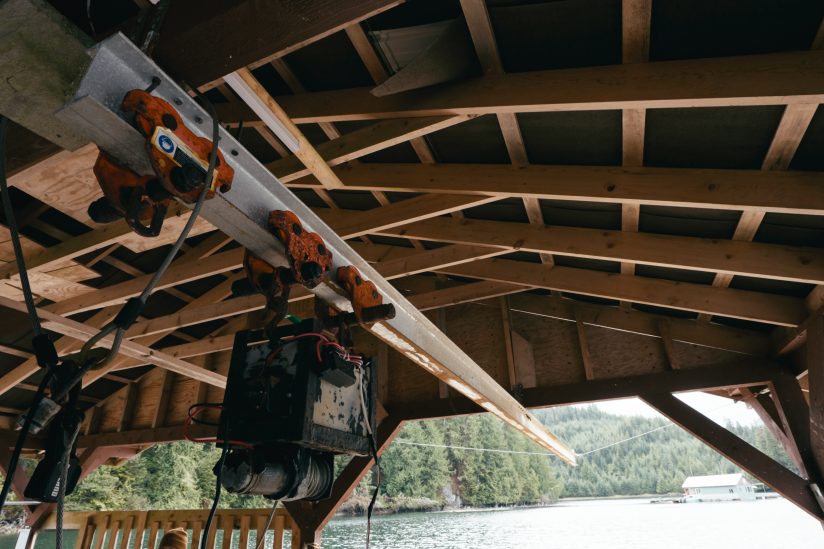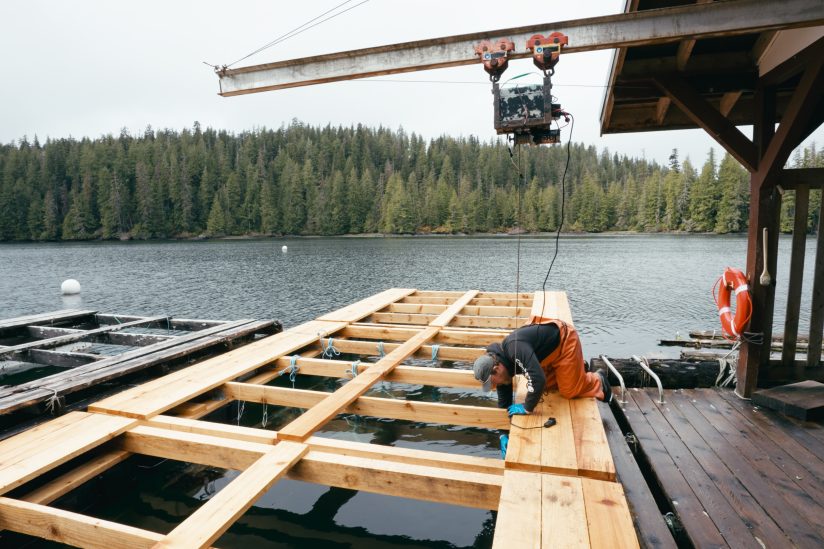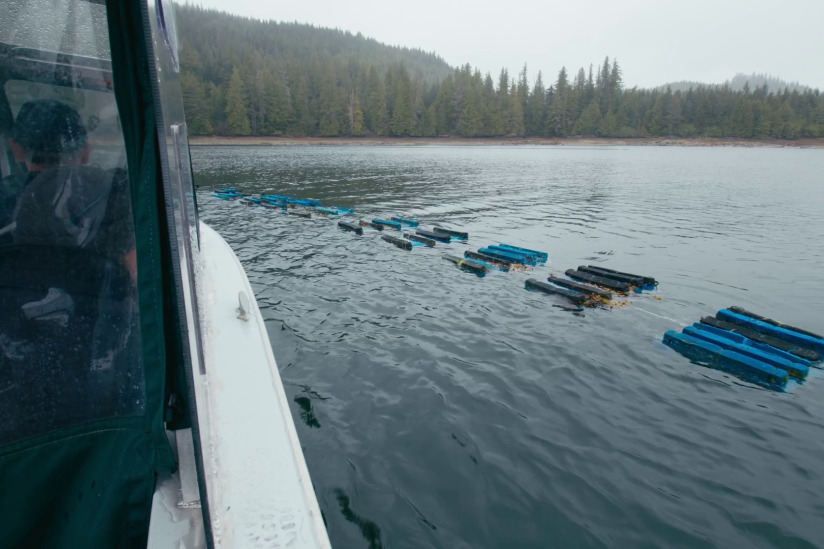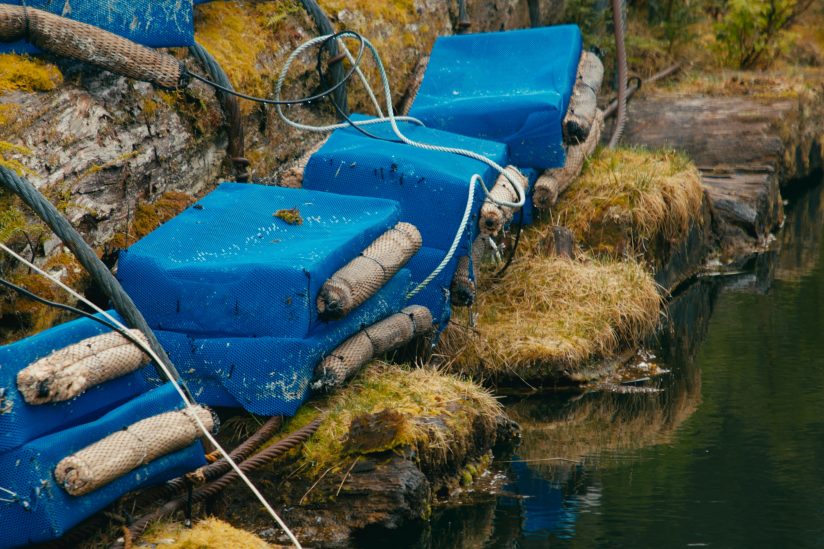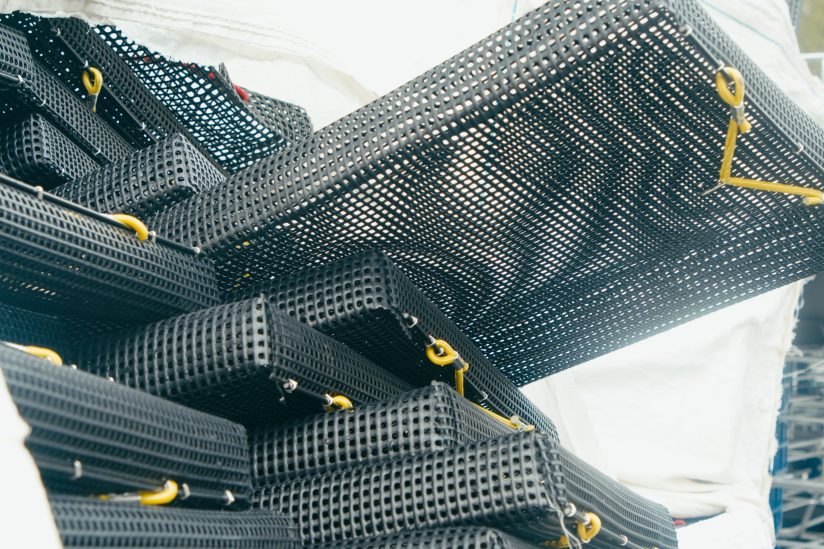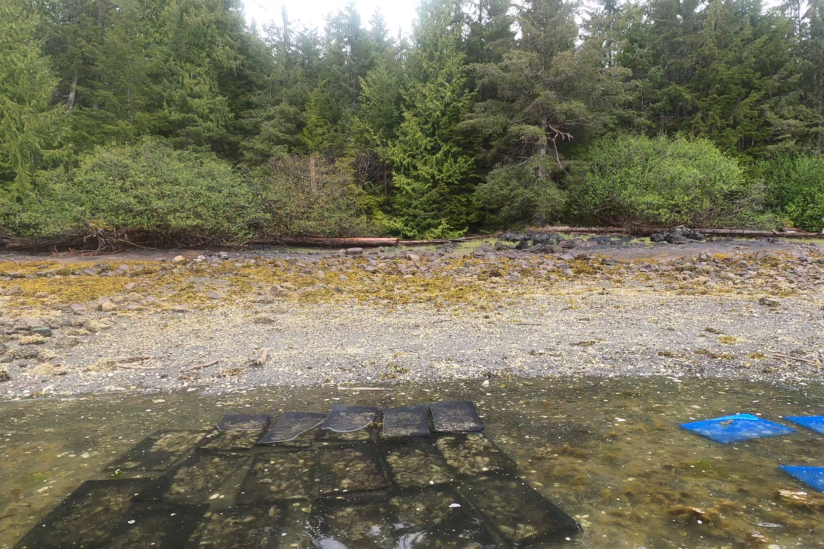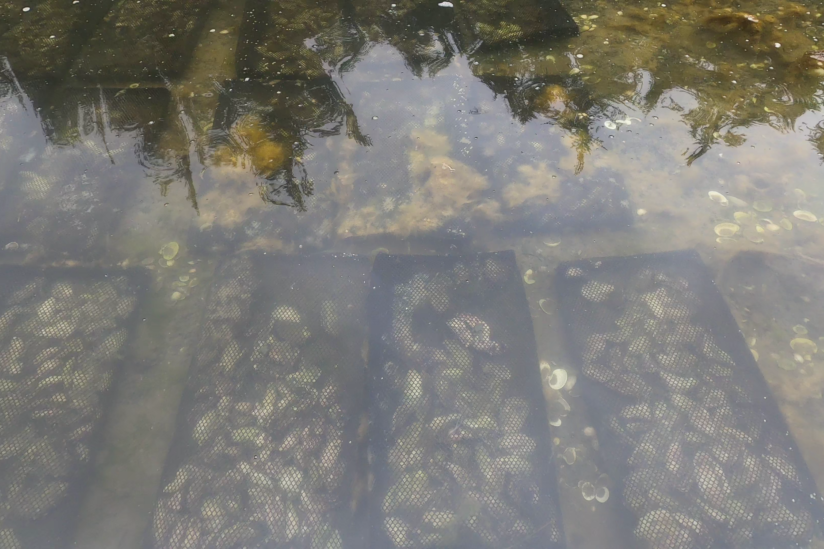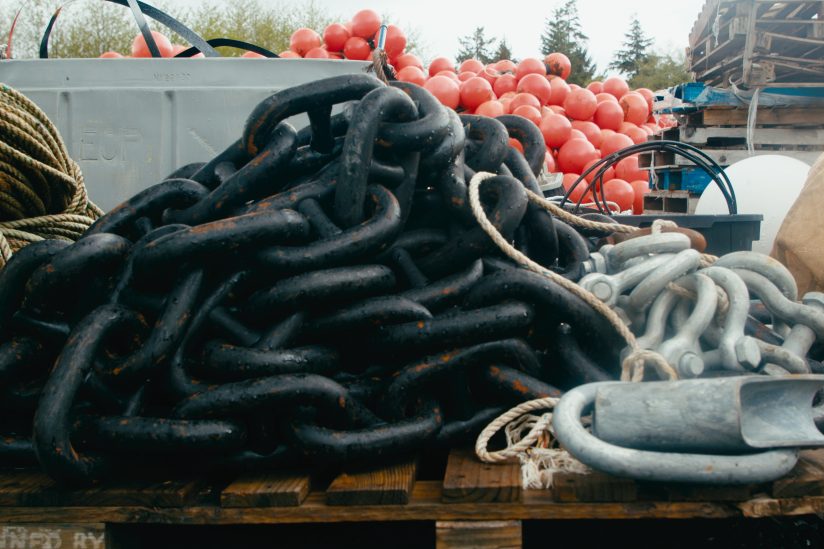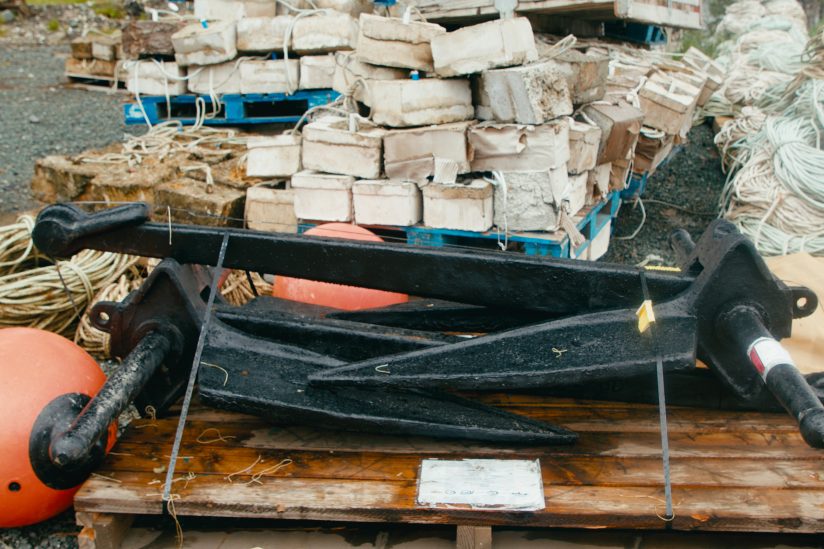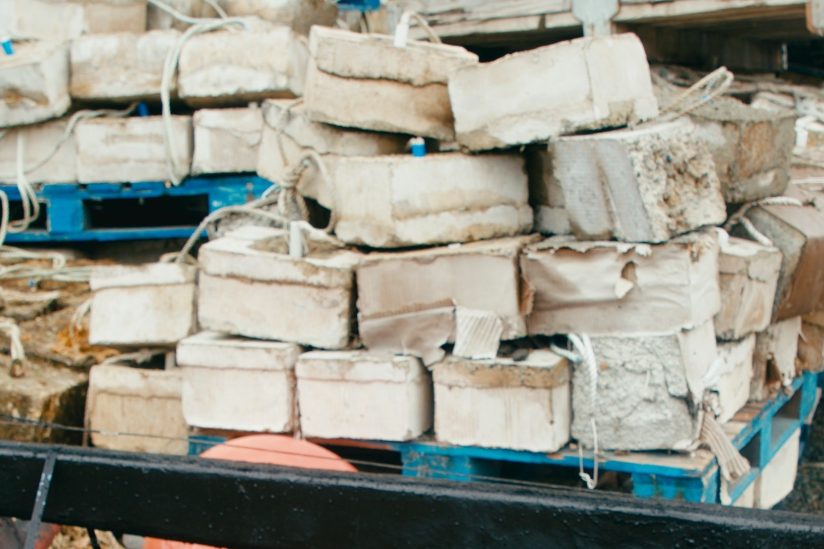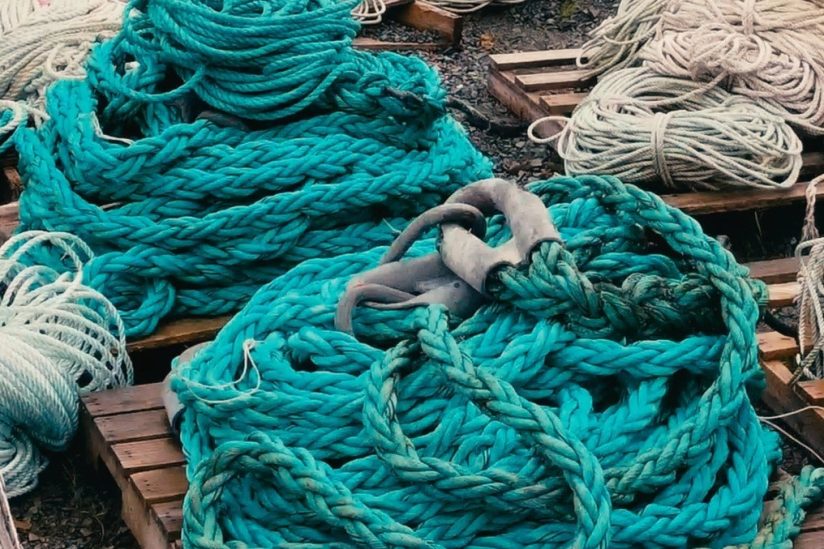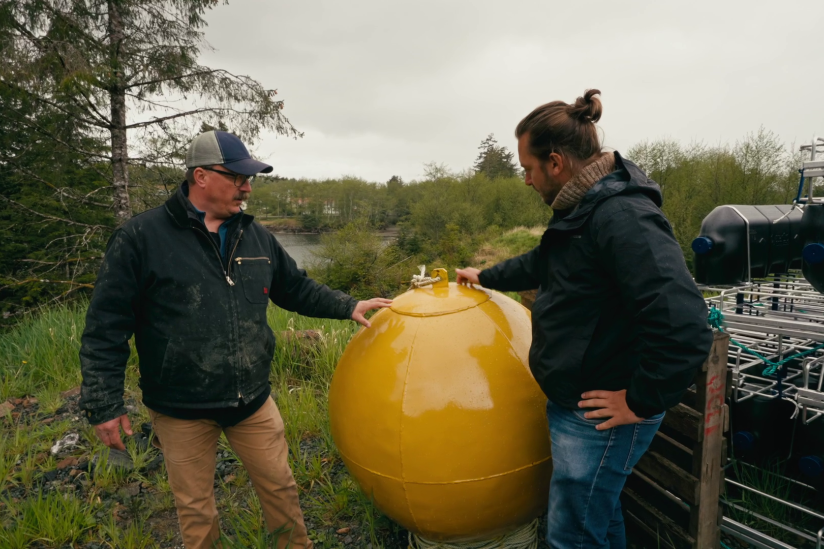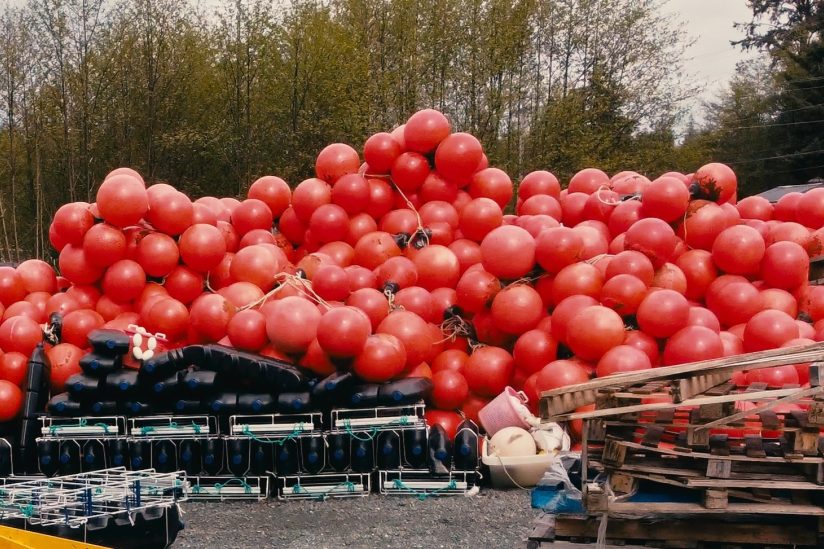
The cultivation method and unique site conditions influence the farm design and required equipment. The design also reflects the farm's location, marine conditions, permitted area size, available working area, and infrastructure.
Lantern nets are the most common gear to be longlined, but other gear can be used as well.
Vertical culture longline system
Vertical culture off a floating platform
Floating bag longline system
Flip cage systems
Two main objectives guided our farm design decisions: efficiency and consistency. We can run this farm with three to four people, as opposed to more labor-intensive farming methods that require handling or tumbling the oysters monthly.
Beach intertidal culture system
Basic equipment required
Anchors, ropes, culture lines, floats, and buoys are essential basic equipment for all farm designs at sea. The equipment and materials the farmer chooses will depend not only on the site conditions but also on the price and equipment's local availability.
Anchors
Anchors secure the array to the seafloor, maintaining its position and tension. Tensioning buoys along the anchor line helps maintain tension during tidal fluctuations by rising in the water at low tide. Tag lines run from the anchor to a retrieval buoy on the surface, aiding in anchor location for retrieval or tensioning.
Buoys


